Cribbage Board Collection part 3
A collection of antique and vintage Cribbage Boards by Tony Hall, part 3
Cribbage Board Collection - part 3
by Tony Hall
The two-player flat board is the most traditional design. The original boards provided for two double rows of 30 holes, broken into six groups of five for easy calculation. The game was first played with five cards per player, each surrendering two “unwanted” cards to the dealer’s box. The first player to gain 61 points was the winner i.e. once round the board and into one of the central holes. In later years the game was (and is now) more frequently played with six cards per hand, and to 121 points i.e. twice round the board. This particular, unremarkable board was owned by my grandfather (Arthur Stanley Rundle); it was the board on which I learned to play in the early 1950s and is therefore very special to me.
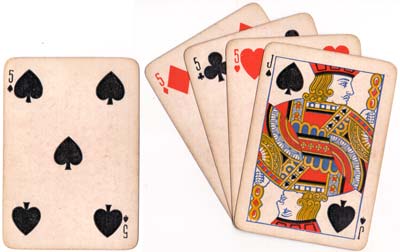
Above: the best hand possible in Cribbage – scoring the maximum of 29 - four cards in hand and the fifth turned-up card in the same suit as the Jack. Thus the hand scores 16 points in 15s, 12 points for having all four 5s... and “one for his nob”!
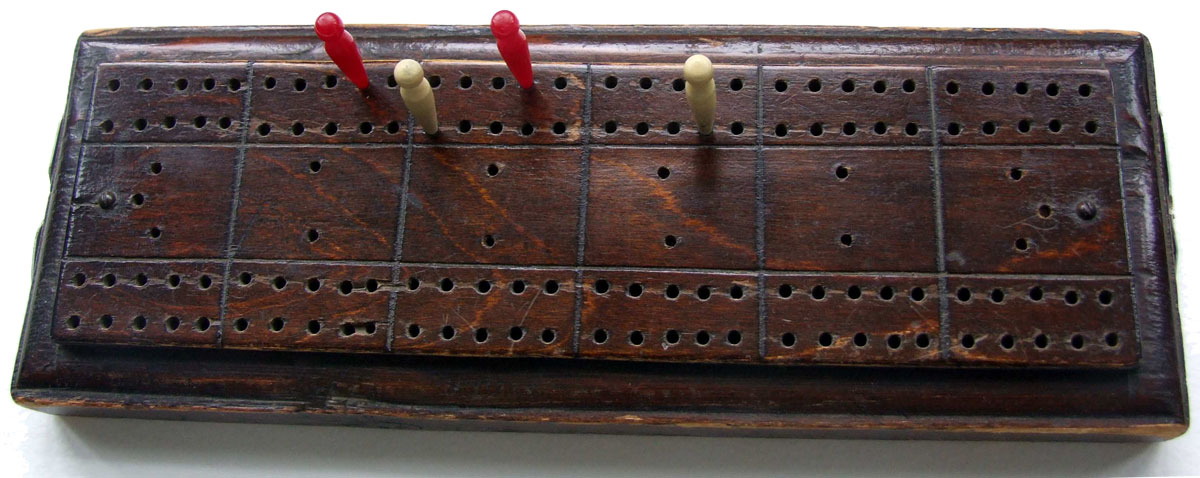
Above: two-player flat board. From the collection of Tony Hall.
A “shed-work” board offers a further variation in design which I have never seen elsewhere. This was made in an era (1930s, 40s and 50s) when men and women made things at home rather than bought expensive versions. Not to be too sexist about it, but women had sewing machines and made clothes and domestic fabric items; men had sheds and made things out of wood and metal. Many such men would be earning their living using the same skills, so the quality of some of the so-called “shed work” can be difficult to identify as such.
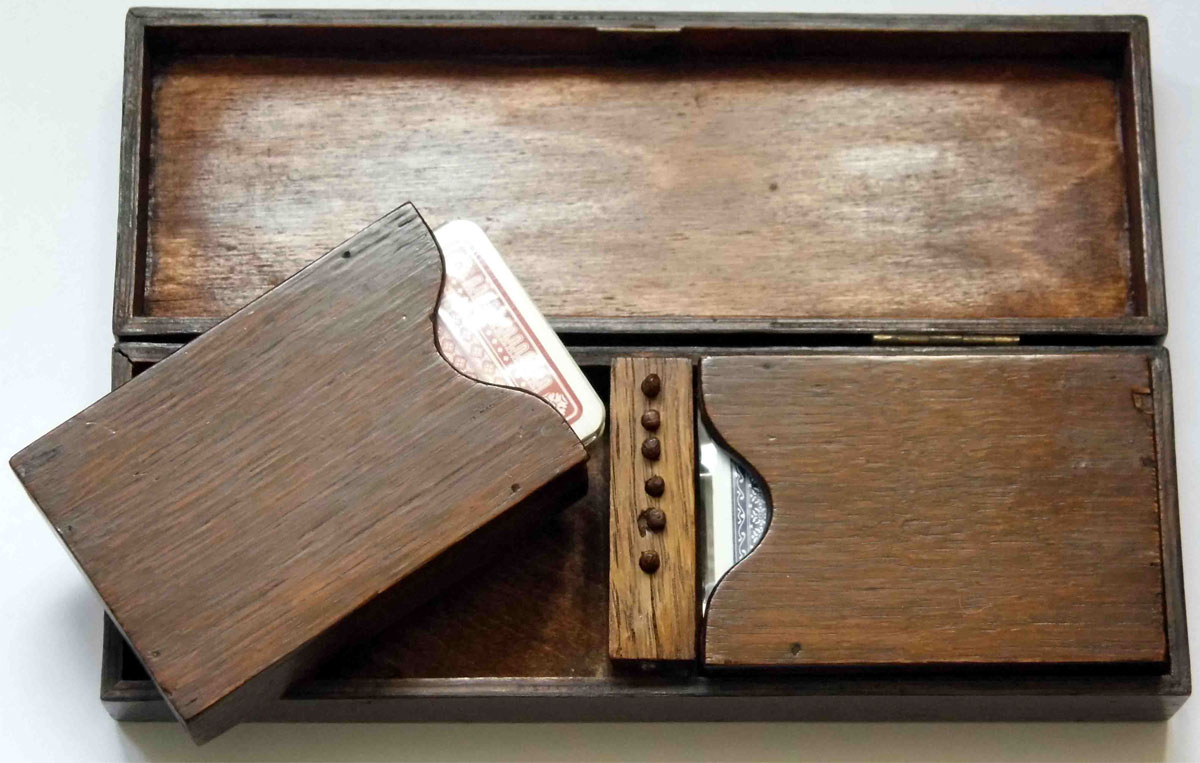
Above: home-made “shed-work” cribbage set. This one has more obviously seen the inside of a shed! From the collection of Tony Hall.
Each of my double board collection caters for only two players, whereas triangular boards are obviously designed for three players.
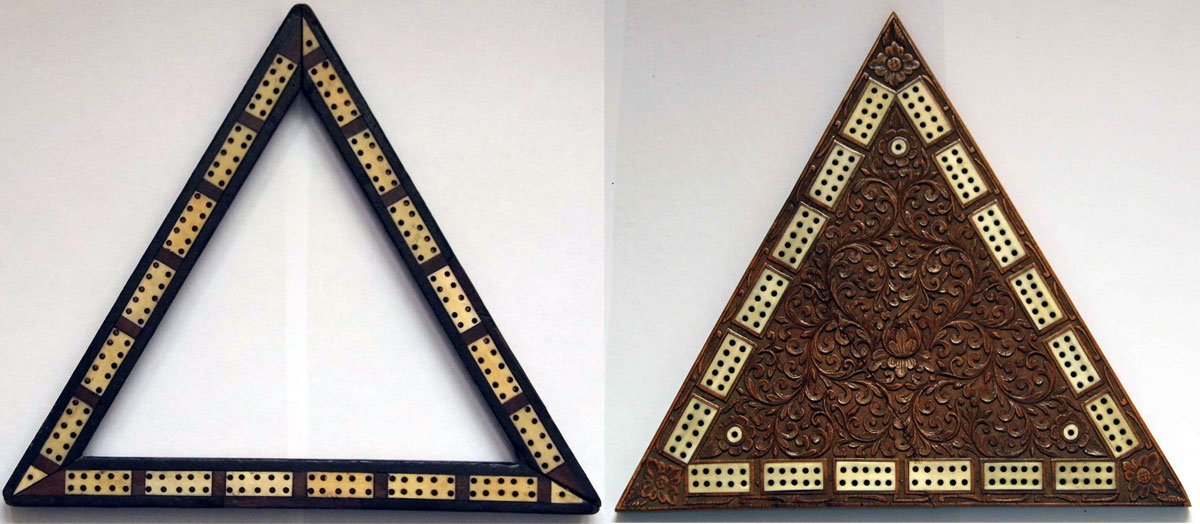
Above: this is the oldest, probably late Victorian; others are more recent. The solid one (right) is smaller but highly decorated and almost certainly comes from India. From the collection of Tony Hall.
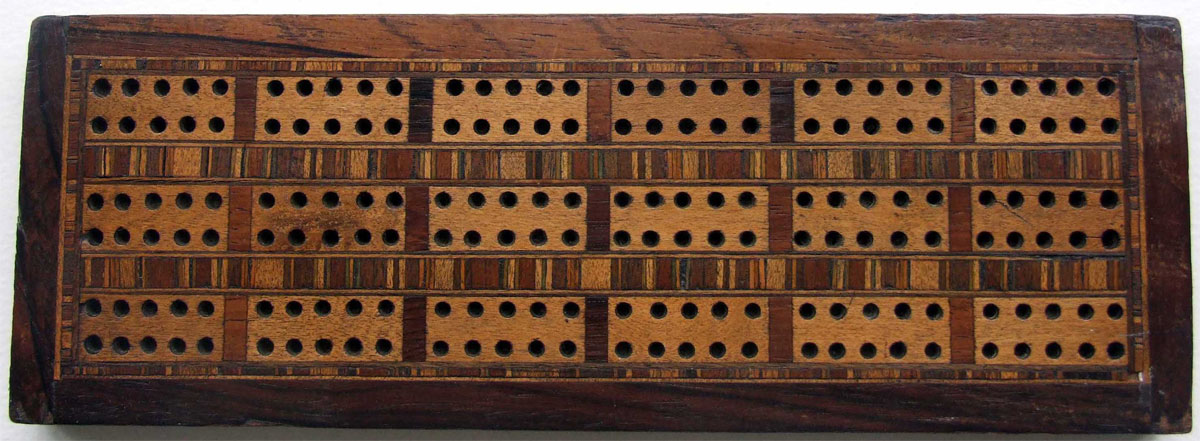
Above: I have one flat board designed for three players, but they are unusual. From the collection of Tony Hall.
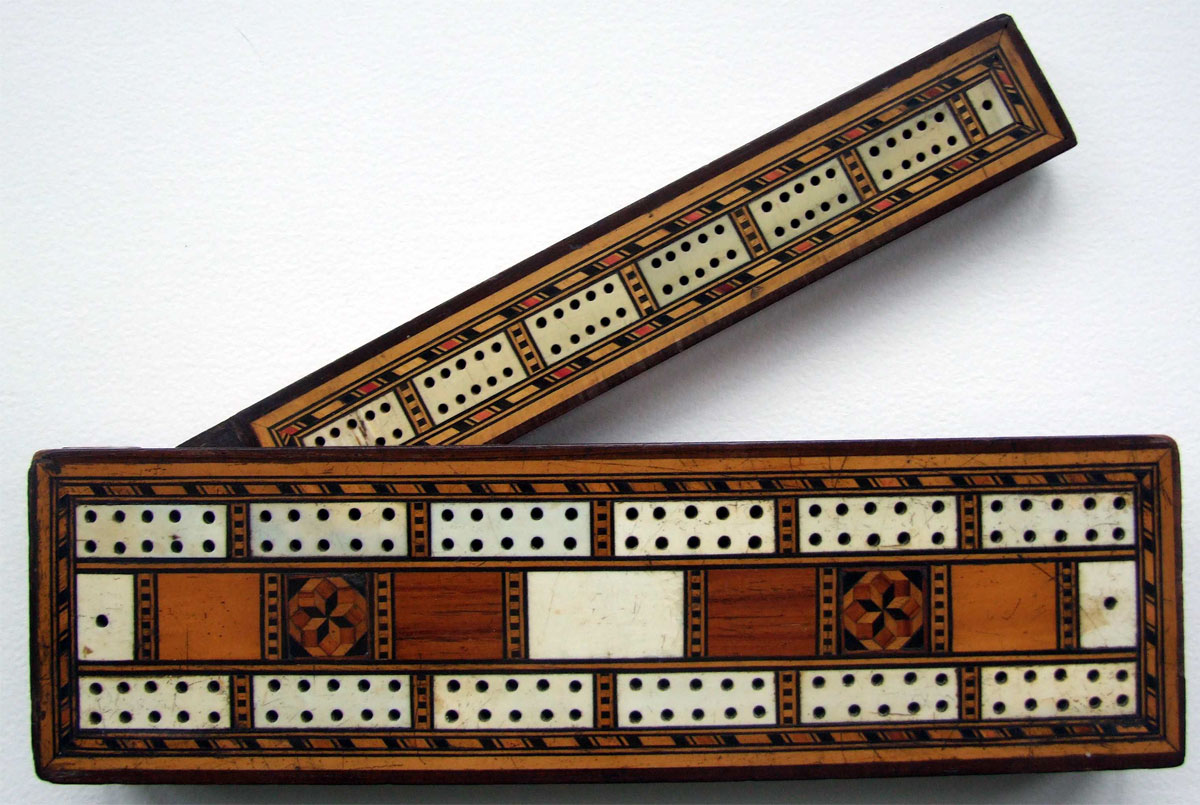
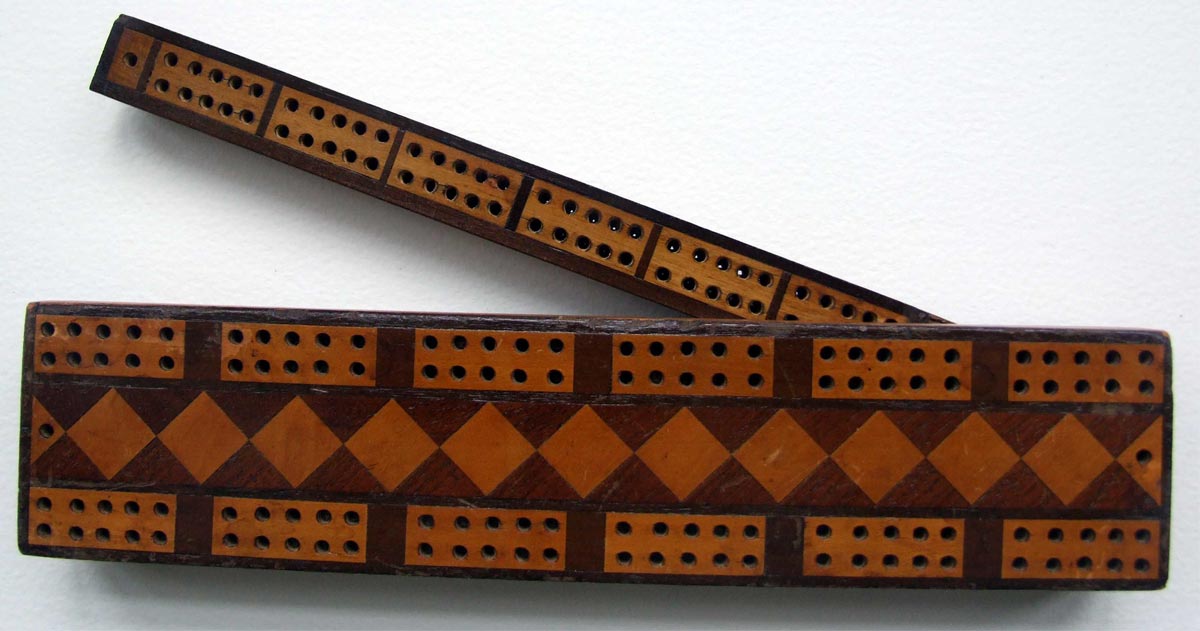
Above: a significant variant of the flat wooden board is the flat board with a third track on a pivot for the three player game. From the collection of Tony Hall.

Above: a “shed-worker” probably produced this to accommodate a second friend! From the collection of Tony Hall.

Above: a beautiful and tactile example of the cabinet-maker’s skill being applied to a cribbage board. From the collection of Tony Hall.


By Tony Hall
Member since January 30, 2015
I started my interest in card games about 70 years ago, playing cribbage with my grandfather. Collecting card game materials started 50 years or so later, when time permitted. One cribbage board was a memory; two became the start of a collection currently exceeding 150!
Once interest in the social history of card games was sparked, I bought a wooden whist marker from the 1880s which was ingenious in design and unbelievably tactile. One lead to two and there was no stopping.
What happened thereafter is reflected in my articles and downloads on this site, for which I will be eternally grateful.
Related Articles

OXO Faces of the Millennium Dinner
Twentieth-century personalities promoting a millennium dinner at the Oxo Tower in London.

Kids Fun Box playing cards
Colourful cards for children with four non-standard suits connected with the natural world.

Tangle Foot Ale
Badger Brewery Tangle Foot strong ale advertising pack.

Scientific Whist
“Scientific Whist” : standard cards with instructions for play on the faces by Chas Goodall & Son, 1...

Agent Provocateur
Branded lingerie collection in a pack of pin-up playing cards.

Nimbus playing cards
Mike Steer’s weather-themed pack with suits in four colours and backs for cardistry.

Agatha Christie and Playing Cards revisited
Agatha Christie uses card-play as a primary focus of a story, and as a way of creating plots and mot...

The Decadent Deck
Studies in the eroticism of the female body by Inge Clayton.

Historic Shakespeare
“Historic Shakespeare” playing cards featuring Shakespearean characters by Chas Goodall & Son.

Copechat Paramount Sorting System
Preserving the past: a specimen deck showcasing edge-notched cards and their ingenious sorting syste...

Heartsette by Herbert Fitch & Co, 1893
A glimpse into a busy print and design office in late Victorian London.

Batman® playing cards
Batman playing cards published by InterCol of London 1989.

Can You Believe Your Eyes?
“Can You Believe Your Eyes?” playing cards featuring visual illusions & other oddities.

Pastime Playing Cards for the Blind
The “Pastime” Playing Cards for the Blind manufactured by Goodall & Son Limd., c.1910.

Songs with Flute accompaniment
Eighteenth century English engraved cards with music for voice and flute.

Love Tests
Vintage novelty “Love Test” cards of a slightly saucy nature but all in good fun!
Most Popular
Our top articles from the past 28 days








